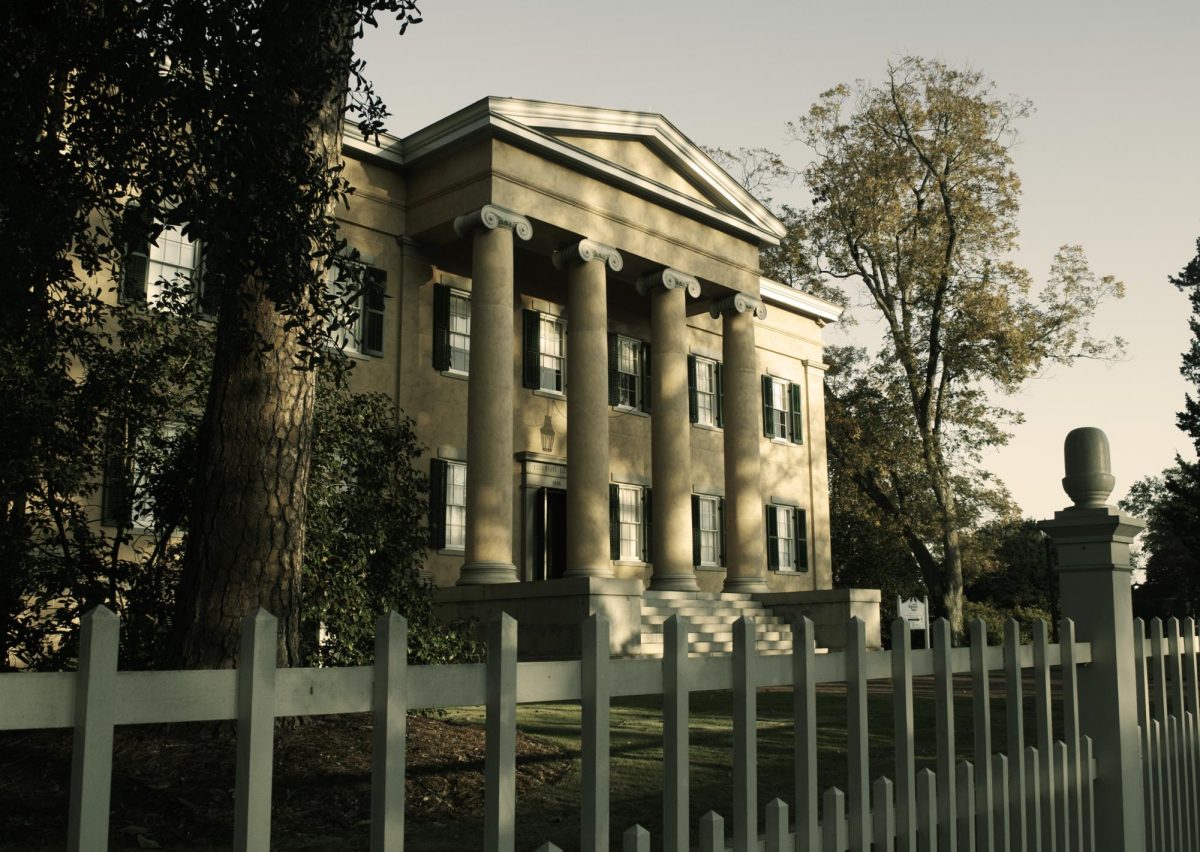As Halloween draws near, Milledgeville’s Old Governor’s Mansion is preparing to bring history to life with its popular “Death After Dark” tours.
Scheduled for Friday, Oct. 25, at 6, 7 and 8 p.m., these exclusive tours offer visitors a glimpse into the 19th-century customs surrounding death and mourning. The mansion, which has witnessed four confirmed deaths within its walls, provides a fitting backdrop for this eerie experience.
“Our Death After Dark tours have become a beloved tradition over the years,” said Danielle Schulze, interim director of historic museums and curator of education and public engagement at the Mansion. “During this specialty tour, we have the opportunity to share a history that we don’t often get to explore throughout the year and honor the people who died in the mansion by telling their stories.”
Docents dressed in traditional mourning attire guide guests through these rituals, shedding light on how death was viewed, honored and feared in a time before modern medicine and secularized funerals.
Maggie Standard, a senior museum studies major and docent for the museum, helps lead these specialty tours, working to recreate the atmosphere of the time period and explaining death practices that may feel unusual or unsettling to modern audiences. For instance, visitors will encounter customs like the covering of mirrors and clocks to avoid summoning bad spirits, a practice rooted in the superstition that reflective surfaces might trap the deceased’s spirit or bring bad luck.
Another unique aspect of the tour, according to Standard, is learning about the Victorian tradition of post-mortem photography, in which families would pose the deceased for portraits to preserve their memory. These customs served as expressions of mourning but also revealed the 19th-century approach to coping with loss and maintaining connections to loved ones who had passed away.
“We find these practices disturbing,” Standard said. “But it was how they dealt with grief at the time.”
Visitors can expect to learn about how race, class and age impacted these rituals. As Standard explained, these factors greatly influenced funeral practices, with stark differences in how enslaved people and wealthy plantation families were treated after death.
“At Georgia’s Old Governor’s Mansion, we strive to tell the whole story of what happened here, who lived here and how these different aspects of history connect to each other,” Schulze said.
The commitment to historical accuracy brings a level of depth and respect to the tours, giving visitors a fuller picture of life and death during this era.
“For those that were enslaved, we do not necessarily know where they were buried, as many enslaved graves were marked with pieces of wood or rock at Memory Hill,” Schulze said. “It’s important to bring their stories to the public’s attention through tours like this to raise awareness and learn about all aspects of our history.”
The Death After Dark tour is a special event on the Mansion’s calendar, one that has grown in popularity over the years and become an annual tradition for some Milledgeville families and students. Standard noted that the seasonal timing makes the tours particularly appealing, especially as residents and visitors are looking for Halloween-related activities.
“Our seasonal tours around Halloween and Christmas are our most popular times of the year,” Schulze said. “During these times, the Mansion is decorated accordingly and provides a unique experience for our guests as they get to see the Mansion in a different way and learn about subjects that are not the central topic of our general tours.”
According to Standard, the tour’s atmosphere often prompts visitors to ask if the mansion is haunted, a question that reflects the intrigue surrounding old historical sites, especially during Halloween.
“We always answer with ‘not that we know of,” Standard said. “For this tour specifically, there are few questions since most of the guests seem to be too enthralled to ask. The reactions of guests vary for the tour. Some are grossed out about certain details shared in the tour, and others are interested.”
For many, the genuine history surrounding the mansion is even more captivating than potential hauntings, offering insight into a world where death was a familiar part of life and where mourning customs were passed down through generations.
Leading a specialty tour like Death After Dark required considerable preparation, especially because it covers material that differs from the mansion’s normal historical tours. Tour guides must familiarize themselves with new information each year and maintain a brisk pace to keep the tours on schedule.
“Preparation for specialty tours really lies in understanding the new material presented to your audience,” Standard said.
The docents must not only stay on top of historical content but also ensure that the experience runs smoothly for all groups attending.
“Successful specialty tours can rely heavily on timing because the three tours happen one after another,” Standard said. “If a tour guide gets off time, then the next tour could potentially start late, which is usually never a problem since everyone on our team knows the importance of starting on time.”
Beyond its seasonal appeal, the Death After Dark tour serves an educational purpose, bridging the past with the present and helping visitors understand the ways 19th-century practices influenced how people view life and death today.
“Death practices of the 19th-century were indicative of the societal and cultural norms of the time,” Schulze said. “There were different expectations for women and men regarding death practices and mourning. Mourning clothes were worn by both men and women when a loved one passed away. However, women were supposed to mourn two and a half years, while men were expected to mourn for three months.”
The experience not only gives attendees a look at Victorian funeral practices but also helps people understand the emotions and coping mechanisms that shaped the century’s approach to death.
“Most are shocked at some point,” Standard said. “But by the end of the tour, they really understand how people of the time felt, and are able to find sympathy even for their ‘outrageous’ practices.”


